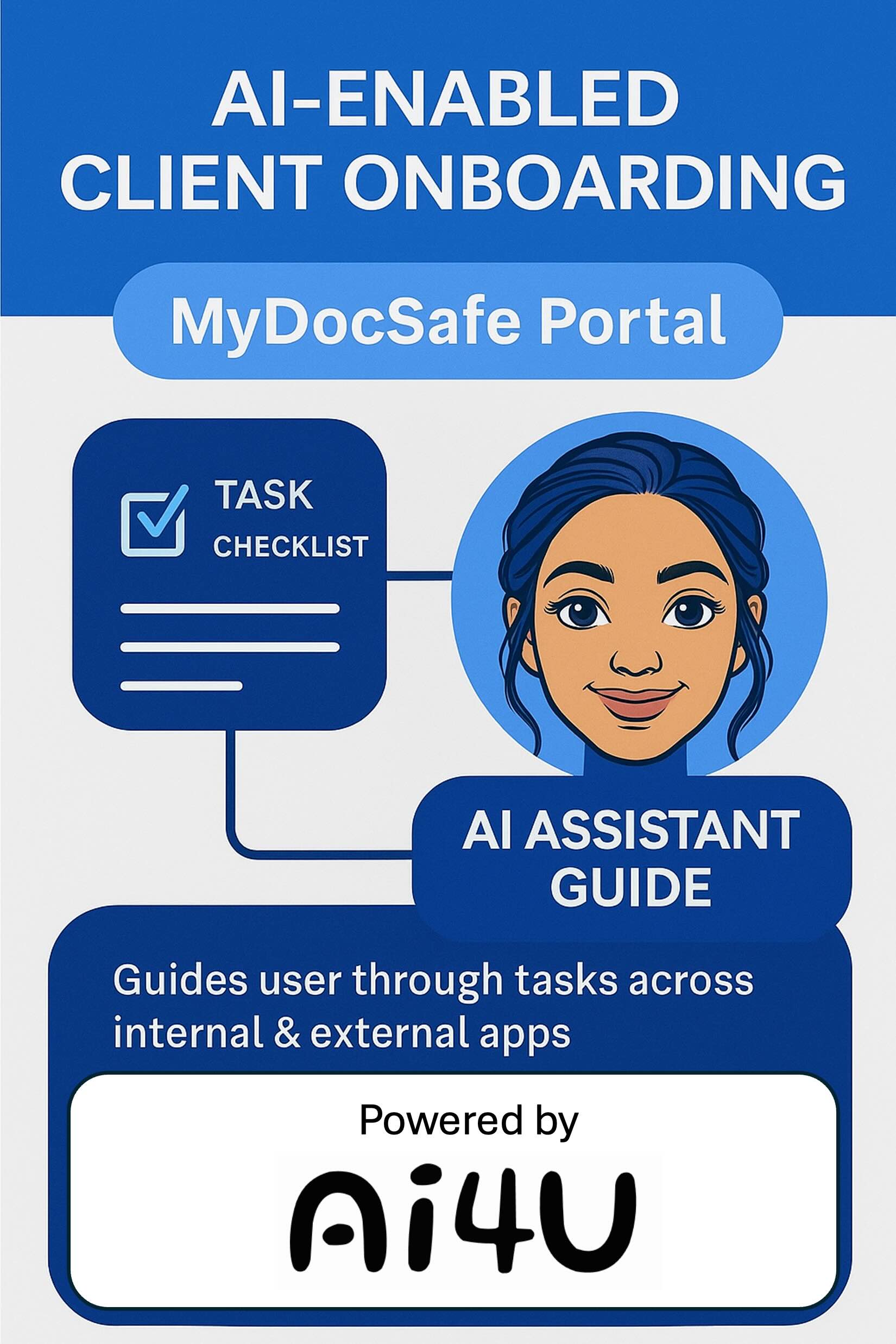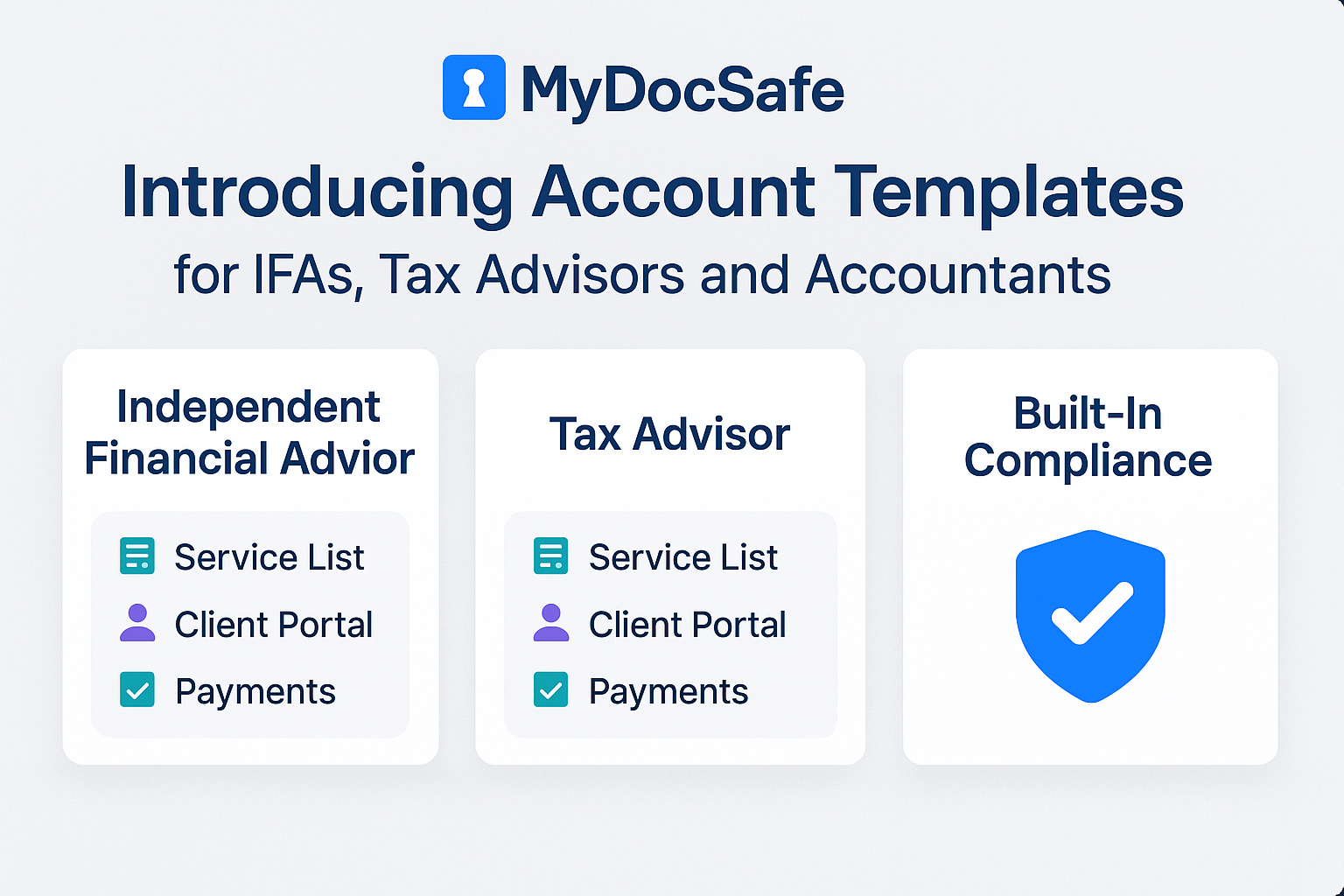Client onboarding
Secure and elegant client onboarding
Design and deploy end-to-end onboarding workflows
Reduce ‘time to revenue’ from new prospects
Make a great first impression
Never ask prospects for sensitive information via email

Automate client onboarding processes
- Design bespoke onboarding workflows for every client type or service.
- Combine form filling, file upload, AML checks, contract signing and payment collection in one seamless process.
Superior client experience
- Make a great first impression: send a beautiful email with a single secure link to the sign-up process.
- Give every customer a free portal with their copies of all signed documents.
- Show off your brand. Keep your brand presence in a private DocSafe of your client even after the engagement ends.
- Signing up fast is a new source of competitive advantage. Taking too long to onboard clients can cause them to go elsewhere. Speed, accuracy and data security are therefore new ways to improve customer experience and loyalty.

Grow your revenue faster
- Signup new customers in minutes rather than days
- Improve data quality provided by prospects
- Reduce deal abort risk
- Cut costs with real-time AML/KYC checks that work in 132 countries
And more…
A sub title for more client onboarding features
Electronic forms to manage client queries and secure data input
Templates to design your own bespoke contracts
Workflow orchestration engine allowing you to build a flow from your own elements (such as forms, contracts, direct debit mandates, ID checks) into your bespoke onboarding experience.
Customise MyDocSafe for your business todayLearn more
Start your free trial today
MyDocSafe is the only document security and e-sign software you need.
Start A free trialClient onboarding is the process of introducing and integrating a new client into a company’s services or products. It’s a critical phase that sets the tone for the client relationship and ensures the client understands and receives value from the services offered. Effective client onboarding can lead to higher client satisfaction, retention, and success. Here are the key components of client onboarding:
(a) Initial Contact and Welcome: Welcome Communication: Sending a welcome email or communication to thank the client for choosing your services and setting expectations for the onboarding process. Introduction to Key Contacts: Introducing the client to their main points of contact within your organization, such as account managers, support teams, or project leads.
(b) Documentation and Agreements: Contracts and Agreements: Ensuring all necessary contracts, agreements, and paperwork are completed and signed. Client Information Gathering: Collecting relevant information about the client’s business, goals, and requirements to tailor the services appropriately.
(c) Kickoff Meeting: Detailed Introduction: Conducting a kickoff meeting to discuss the client’s objectives, timelines, and how the services will be delivered. Setting Expectations: Clarifying the scope of work, key milestones, communication protocols, and any other important details.
System Setup and Training:
(d) Account and System Setup: Setting up any necessary accounts, software, or systems the client will need to use your services.
Training and Orientation: Providing training sessions, resources, or manuals to help the client understand how to use your services effectively.
Customization and Implementation:
(e) Tailoring Services: Customizing your services to fit the specific needs and goals of the client.
Implementation Plan: Developing and executing an implementation plan to start delivering the agreed-upon services.
Regular Check-Ins:
(f) Progress Updates: Scheduling regular check-ins to discuss progress, address any issues, and ensure the client is satisfied with the services. Feedback Loop: Creating opportunities for the client to provide feedback on the onboarding process and the services received.
Support and Resources: Dedicated Support: Providing access to dedicated support teams or account managers to address any questions or concerns the client may have. Resource Library: Offering access to a library of resources, such as FAQs, guides, tutorials, and best practices.
(g) Review and Adjustment: Performance Review: Reviewing the initial outcomes against the client’s expectations and goals to ensure alignment. Adjustments: Making any necessary adjustments to the services or approach based on the initial feedback and performance.
(h) Formal Handover: Transition to Ongoing Management: Once the onboarding is complete, transitioning the client to the regular service delivery phase with a clear understanding of what to expect moving forward.
Client Satisfaction Survey: Conducting a satisfaction survey to gather feedback on the onboarding experience and identify areas for improvement.

